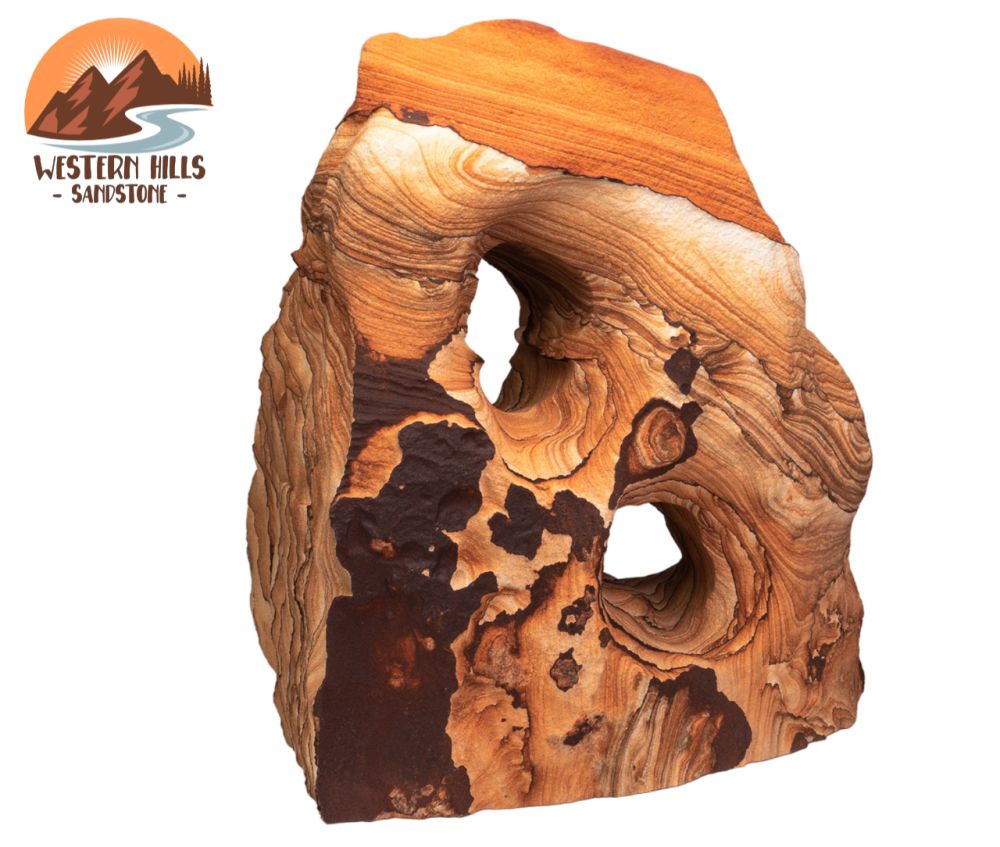We use cookies to make your experience better.
TimmersGems has a new website, existing customers also need to register again.
Beautiful sandstone arches "Arches" from Western Hill U.S.A. Large format 140-200mm
Beautiful natural wonders and not only attractive for a mineral collector but also as an interior object. Each and every one of them, beautiful pieces, varying in size but also in color and drawings.
Availability:
In stock
SKU
121250
Sandstone is a sedimentary or sedimentary rock composed mainly of grains of sand. During sedimentation of sand grains, silt, lime, gravel, mica, feldspar and other rock fragments are also deposited. Due to weathering, an originally yellow-brown sandstone turns gray. The presence of certain oxides and other minerals colors variants brown-red. Sandstone consists mainly of quartz. Sandstone is widely used as a building material in the Netherlands and Belgium. In the Netherlands, the Bentheimer sandstone (from Bentheim) and the Obernkirchener sandstone (from Obernkirchen) are mainly used, and for sculptures also the fine-grained Baumberger sandstone, due to its high lime content, which is very suitable for fine stone and sculpture work, but is not very weather-resistant is. In the Netherlands, the name sandstone is used exclusively for pure sandstones (without lime) that were mainly imported from Northern Germany and in a period around 1900 also from Luxembourg and the surrounding area. The sandy limestone Balegem stone, Ledesteen and Gobertange from Belgium (often called sand-lime stone in Belgium), which are mainly found on many medieval buildings, are usually not considered pure sandstones in the Netherlands. The common collective name for these types of stone is White Belgian stone. In the Netherlands, sandstone comes to the surface in the east of Twente, near Winterswijk and in Limburg. However, it is no longer possible to win here. In the rest of the Netherlands, sufficient diagenesis has not yet occurred to produce sandstone. For four centuries, from 1450 to 1850, sandstone was mainly transported from or via Bad Bentheim to the Netherlands over the Overijsselse Vecht. Cities such as Ommen and Zwolle are included. Due to the high costs of transport, the stone was mainly used in important buildings. The facades of the Royal Palace Amsterdam, for example, are made of Obernkirchener and Bentheimer sandstone. The invention of the train brought many exotic types of stone onto the market. This marked the end of the peak of the trade in 'Bentheimer Gold'. Nowadays, sandstone is still extracted on a relatively small scale in and around Bentheim, especially in Gildehaus; the quarry near Obernkirchen is in much larger-scale exploitation.
| Dimensions | 140-200mm |
|---|---|
| Country of Manufacture | United States |












